Dissociative Identity Disorder formerly known as Multiple Personality Disorder is a rare, complex mental illness, still debated in the healthcare industry, but thought to be a coping mechanism for violence inflicted, that was much too great, for the singular mind to handle.
∞∞∞
∞∞∞
Robert & the Alternates
Photography by Robert M. Goldstein
written & developed by Kendall F. Person
I had only lived in Robert M Goldstein’s world for less than 24 hours, but that was all it took, before I had become a nervous wreck. Trying to understand a mental illness, that divides the mind into its own society, giving rise to new personalities, as alternates to self, completely real inside the head, but all named Bob to the outside world. Reliving Bob’s past with an abusive and narcissistic mother, trying to determine one alternative from the other, not even knowing if Robert M Goldstein was a man or woman, and during our back and forth written communication, wondering which one it was… became nearly too much.
Years ago, I served as an Arts Commissioner with the City of Sacramento, and during my term and a half, I would gain comprehension of the absoluteness of an artists. To paint or write or sing or dance was not something they did or a weekend hobby, but it was a passion, deriving from the essence of their soul, and broadcast to the world as a picture or a song.
My alternatives use different styles in the way they write, but they share a certain tone of voice. That singularity of voice is my true self. – Robert M Goldstein
And slowly I would begin to understand, that it did not matter which Alternative had looked through the zoom lens, the picture captured and the art created, is the contribution of a singularly artist, with multiple perspectives, imagined or not.
As an adult survivor of sexual abuse, I say this from experience: Before one can stop being a victim, one must accept, that one was a victim. What you are describing is the “false victim’… it is a mask designed {to hide} the real pain, that for many survivors is so overwhelming, that it often feels like dying. – Robert M Goldstein
Every photograph, two of the captions and even Billie Holiday, was personally selected or written by Robert M Goldstein. Artists Collaborations within The Neighborhood, traditionally have not given an individual artist so much control. However, I thought the essence of the mental illness, created its own exception.
After receiving the above photograph, my mind tumbled backward for just a moment, as I pondered, “Which Alternative to Robert captured this moment, and was Robert somewhere in the crowd, moving among, but invisible to the people, because the mental illness of Dissociative Identity Disorder, had an Alternative in Robert’s place, existing as someone else?” But then I read the title ‘United’ and decided, to let that be the answer to my question.
A very special thank you to Art by Rob Goldstein
#TAG: The Neighborhood Anthology on Leadership & Authority ed. VIII by Robert M. Goldstein


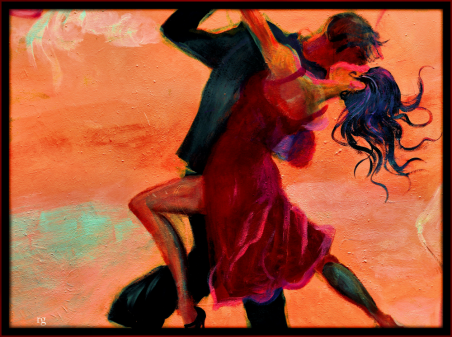
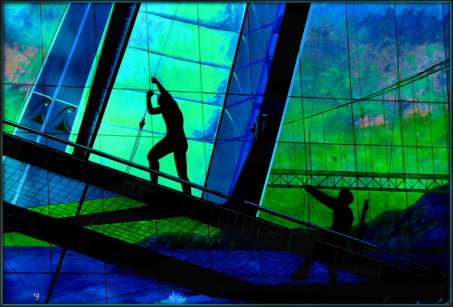

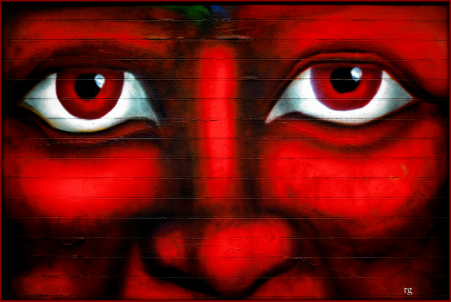

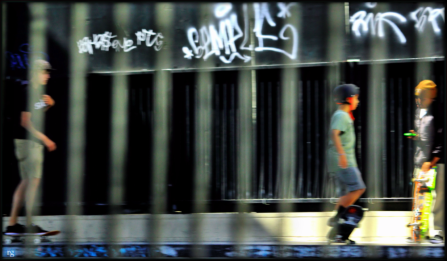




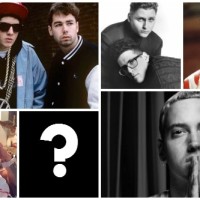




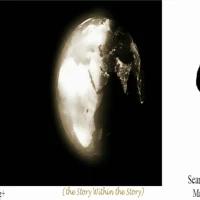
Pingback: HEALTHY COMMUNITIES THRIVE UNDER LEADERSHIP THAT LEAVES NO ONE BEHIND | The Neighborhood
Pingback: the 2015 Five Most Memorable Visual Art Contributions | The Neighborhood
Pingback: #TAG: The Neighborhood Anthology on Leadership & Authority ed. VIII by Robert M. Goldstein | The Neighborhood
Pingback: The Dragon’s Loyalty Award | Art by Rob Goldstein
who is to diagnose anyway?
LikeLike
fascinating!
LikeLiked by 1 person
Reblogged this on M.A.B.E. with Coleman "What I See In The Mirror".
LikeLike
This “issue” of how the brain can and sometimes does protect itself from psychological and emotional trauma fascinates me. It’s beautiful to see that even in the midst of chaos that these other selves may bring into a person’s life, there is the calm of something amazing that can be shared. Thank you for sharing the art.
~ BJF
LikeLike
It really doesn’t matter who he is, or how many folks he is, his spirit is brilliant. I am beyond fascinated at the human ability to cope with unspeakable trauma. I will watch as his stories manifest in so many artistic ways. Van
LikeLike
thanks for this! I wrote about the same topic:
LikeLiked by 1 person
Thank you Kendal, I really appreciated viewing this. The artwork is strong and bold and certainly brings a lot of messages home. It is a pleasure to view them and thank you for sharing them with us. 😀
LikeLike
You are very welcome. And thank you for adding your voice and for venturing into The Neighborhood on this day. Robert certainly has an eagle eye and is strong of thought.
LikeLiked by 1 person
Thank you for supporting my blog too. Unfortunately when I started it I accidentally deleted your comments thinking your name was spam. I look forward to hearing from you again. I really liked Robert’s art work and thought that it was great. Thank you 😀
LikeLiked by 1 person
Reblogged this on Art by Rob Goldstein and commented:
My gratitude to Kendall F. Person and to the many other fine artists who contribute to The Neighborhood.
LikeLiked by 3 people
I’m touched beyond belief. I rarely have the opportunity to see another persons true reaction to my illness. I still find myself in disbelief. I am honored to by this presentation. But most important, I feel respected as a person. Thank you.
LikeLiked by 3 people
Ladies & Gentlemen… we can breathe easy now, for the guest of honor as arrived.
LikeLiked by 3 people
and Robert, please know, the pleasure has always been mine. Please feel free to mingle by responding to the comments or just sit back and enjoy yourself. So good to know you enjoyed your show. Welcome to The Neighborhood.
LikeLiked by 2 people
I’ve spent years studying this beast–it’s good to share what I’ve learned. Thank you again…
LikeLike
I was checking out Robert M Goldstein’s website a couple of days ago (after noticing his involvement with “The Lives We Live”) and was much intrigued with his story, artwork, blog, condition… I did a brief search to verify that what I understood to be multiple personality disorder was indeed what was being referred to as Dissociative Identity Disorder on his site. The reading was enlightening and is personalized even further thanks to this post. I am glad to find Robert out and about in The Neighborhood.
I am left wondering if perhaps we all don’t disassociate mildly on occasion…
At any rate… some powerful images and food for thought – thanks for sharing this glimpse into the mind of this multifaceted, multi talented individual.
LikeLiked by 2 people
Ladies & Gentlemen… we can breathe easy now, for the guest of honor as arrived.
LikeLiked by 2 people
Thank you for adding your distinctive voice and for coming to Robert’s party. i often say, that while I may present the topic, it is in The Neighborhood forum, where we teach and learn so much. You are appreciated.
LikeLiked by 2 people
In answer to your question regarding whether everyone does the answer is yes. It is natural response of the body and mind to the fear of imminent death. We see this in the wild — the prey animal freezes and goes numb as soon as the predator catches it. The animal ‘leaves’ its body and does not feel the pain of its death.
This is how it is possible for people to make dispassionate decisions when faced with imminent death. Again we saw this on 9/11. People calmly prepared themselves to jump.
They were dead well before they hit the ground.
Dissociative Identity Disorder begins as a defense mechanism to an environment in which a child is abused, abandoned, and terrified. The abuse has to be sustained and repeated.
The Child goes away; it ascribes the experience to a different child and in the absence of
nurturing will invent an internal family; an ideal one…one in which it is always accepted.
By the time the child is an adult the dissociative strategy is entrenched and normalized.
And instead of aging normally– the person creates new selves for each phase of life
because he has never learned to integrate the past into the present.
The theory of the “Structural Dissociation of the Personality” seems to be the most solid. Everyone dissociates during trauma. Healthy people may distance themselves at first but they eventually integrate the trauma into their lives.
The Dissociative Experiences Scale is one way to measure the degree to which you dissociate. It was used by my Kaiser psychiatrist as part of the evaluation that led to my diagnosis.
http://counsellingresource.com/lib/quizzes/misc-tests/des/
LikeLiked by 2 people
Brilliant reply! A defence mechanism… fascinating! Thank you for sharing your personal expertise with this way of life. Looking forward to following your craft on the pages of your blog and find your presence in TheNeighborhood one more reason to keep this place on my regular rotation 😀
LikeLiked by 1 person
Thank you for reading the post and for your generous comment…I think it’s fair to say that if I am open about my life it is because my fellow bloggers on Word Press support it.
LikeLiked by 1 person
Thank-you! I find this very, very powerful.
LikeLiked by 1 person
Thank you for adding your voice. You are appreciated very much. So good to have you in The Neighborhood.
LikeLiked by 1 person
I especially like the last two photos – so understated that they seemed to be about nothing, but framed by your text and Goldstein’s bio, they begin to accumulate meaning indirectly, like the “screen memories” Freud talked about – false memories that developed as replacements or “screens” for a memory too painful to face directly. In a way, these photos give us a few random identities to choose from, screened from painful pasts by their own anonymity. And yes, the “United” title keeps pulling you back to think again. (I know nothing of actual clinical practice – just a curious and empathetic observer.)
LikeLiked by 2 people
Skate Park I almost did not use this one, but then it struck me that we are seeing through the photographers eyes, behind bars staring, at teenagers living normal lives. Robert chose each photo carefully, it was up to me to figure out why. Thank you for adding your perspective. Always enlightening.
LikeLiked by 2 people
Wow! That’s great! Simple shot — more and more layers of meaning as you look into it.
LikeLiked by 2 people
The Dissociative Experiences Scale is one way to measure the degree to which you dissociate. It was used by my Kaiser psychiatrist as part of the evaluation that led to my diagnosis.
This screen memory that you refer to is also called “confabulating”…a confabulation is a false memory that serves as “filler’. I think it is important to know that we don’t need to be clinicians to find the complexity of the human mind fascinating and wondrous. If you stop to think about it, creating an alternate universe to cope with being helpless child in an abusive environment is a reasonable response. My ability to dissociate preserved the important elements of my mind and personality.
Had I not made this instinctive choice when I was four I would not be able to write this.
Thank you for your interest.
LikeLiked by 3 people
I appreciate the window you’ve given us into that fascinating landscape of the mind. And it’s nice to be reminded that a behavior that causes us difficulty today may have started long ago as a rational (and successful) response to immediate conditions. Plus, I just like the artwork as art 🙂
LikeLiked by 1 person
Thank you for reading and commenting and for being open. Our minds are magnificent self creations…there may be other animals on this planet with mind, it may be that a brain can produce a “mind” without a cerebral cortex, we don’t know. My brain decided to do it best to live–and it succeeded. I find it deeply annoying when “professionals” and members of the general public try to shame and penalize me for surviving.
We constantly hear about the “power” of the mind to create “reality”. Well people with Dissociative Identity Disorder are proof of that power.
LikeLiked by 1 person
Reblogged this on CELONA'S BLOG and commented:
Another wonderful collaborative effort from the neighbourhood..
It’s always great having Robert M Goldstein somewhere around.. Great Gee!
LikeLiked by 2 people
Celonacharles – Thank you for coming to Robert’s party and for sharing it within your community. The Neighborhood is all the better with you in it.
LikeLiked by 3 people
Agreed…
LikeLiked by 1 person
I feel honoured being part of your team Sire..
Bless
LikeLike
and I am proud to have you grasshopper.
LikeLiked by 1 person
It’s a pleasure working along side great minds like you 😉
LikeLike
Thank you, my friend…:)
LikeLiked by 2 people
No worries bro (huge smile)
LikeLiked by 1 person
Kendall, I’m thrilled that you featured Robert. He is gifted as an artist and loving as a soul.
LikeLiked by 3 people
Kitt – So good to see you and glad you made it to Robert’s show. I can breathe easy now, for he has arrived and has checked in with an emotional response.
LikeLiked by 2 people
Thank you–feeling a little overwhelmed but truly grateful for the opportunity to throw light on an illness that is especially stigmatized and from which many people silently suffer.
LikeLiked by 3 people
When “experts” debate whether DID even exists, that dismisses the reality of your experience, which is the last thing you need given what you’ve survived horrendous abuse. In a way, DID is an extremely creative coping mechanism. Now that you’ve survived, your alters can come together into a more cohesive whole.
LikeLiked by 3 people
Thank you for saying this. I’ve seen MRI’s that show distinct areas of the brain where the alternates are located.
There would have to be a physical manifestation of such an extreme defense mechanism.
I think the most irritating aspect of our culture today is the way our health system arrogantly dismisses the miraculous fact of our minds.
Because of DID I can never be content with the thrift shop behavioral approach that would reduce me to set of rote behaviors.
Thank you for your visit and comment.:)
LikeLiked by 2 people
I LOVE your phrase, “the miraculous fact of our minds.” That says it all. I find it amazing the ways the mind protects the self. I would be fascinated to see those MRIs, and to share that information.
LikeLiked by 2 people
I wrote a post for you…:)
http://wp.me/p47Ymh-21Q
LikeLiked by 1 person
Reblogged this on sam tumblin favorite artists and more.
LikeLiked by 1 person
Reblogged this on http://www.didyouhearpodcast.com didyouhearpodcast@gmail.com.
LikeLiked by 2 people
Reblogged this on authenticitee and commented:
Hello Beautiful People!
Do you know what Dissociative Identity Disorder is? Well one of my favorite artists and new cyberbuddy in the blogging community Robert Goldstein has been featured in this amazing article! It highlights his incredible art work while shedding insight on Dissociative Identity Disorder.
Be sure to check him out…
Blessings,
e
LikeLiked by 4 people
You are a gift. 🙂
LikeLiked by 3 people
Humbled and honored😌
LikeLiked by 1 person
I cannot tell you how happy I was to see this piece! I just surprised Robert yesterday with this! https://authenticitee.wordpress.com/2015/07/25/and-then-there-was-kittomalley-robrt_m_goldste-_thenewsexy/
Thrilled!!
e
LikeLiked by 2 people
Your sentiments are appreciated by many. Thank you for the kind words and enjoying the work of Robert. So good to have you in The Neighborhood.
LikeLiked by 2 people
I appreciate your words of life😌
Humbled by your kindness. Thank you so much…
e
LikeLike
Very interesting and complex thank you Kendall for this post sharing your thoughts
LikeLiked by 3 people
Thank you for adding your voice, as your sentiments hit home. This was a very challenging collaboration, but one I was proud to present and be a part of. My apologies if I have not told you before, but welcome to The Neighborhood.
LikeLiked by 2 people
Thank you, Kendall. You have done me and everyone else with DID a real service, and you did it from the heart. I will always be grateful.
LikeLiked by 2 people
(huge smile)
LikeLiked by 1 person
Thank you! I am happy to add my voice you did great to go throughout this challenging collaboration.
LikeLiked by 1 person